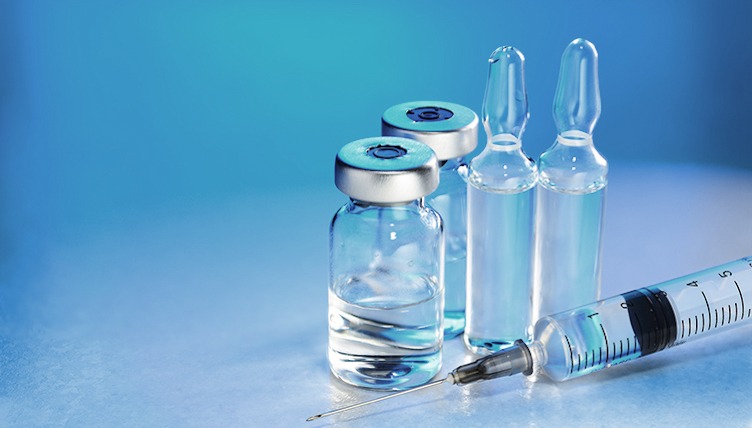Market View: Parenteral Drugs
Parenteral drugs are an important part of the pharmaceutical market due to the increase in biologics and complex active pharmaceutical ingredients (APIs) in development. DCAT Value Chain Insights examines key product, manufacturing, and drug-delivery trends for parenteral drugs.
Parenteral drugs and recent approvals
Parenteral drugs, which may be a biologic or small molecule, refer to drugs using non-oral means of administration by injecting the drug directly into the body typically through three common routes of administration: intramuscular, subcutaneous and intravenous. The percentage of parenteral drugs approved as new molecular entities (NMEs) by the US Food and Drug Administration’s (FDA) Center for Drug Evaluation and Research (CDER) (see Table I at end of article) reached a recent high of 59% in 2016 and has since trended near 40% over the past several years.
Impact on drug development and manufacturing
To gain a perspective of the key trends in development and manufacturing of parenteral drugs, DCAT Value Chain Insights gained input from industry members. Providing perspectives were Claus Feussner, PhD, Senior Vice President Development Service, Vetter Pharma-Fertigung GmbH & Co. KG, and Fabio Stevanon, Director, Global Injectables Platform, CordenPharma International.
On a product level, what do you see as the key issues or trends impacting the market (both clinical development and commercialization) for parenteral drugs overall? In biologic-based parenterals? In small-molecule parenterals?
 |
|
Fabio Stevanon |
Feussner (Vetter): We identify a significant increase in complex drugs, new treatment options, and therapeutic approaches, such as gene and cell therapy, but also a trend toward new technologies and different trading strategies. In 2018, 59 new drugs were approved by the FDA. Of these, approximately 40% were injectables. Additionally, three new substance classes or targets among injectables were introduced. A large amount of new therapies are orphan drugs and monoclonal antibodies for cancer. Meanwhile, the increase in chronic ailments has led to an expansion of self-injection devices and newer, more precise diagnostic tools that allow for therapeutic or treatment protocols to be designed specifically for a patient’s physiological profile.
While this is clearly a positive development for injectables, the downside is that new drugs are often manufactured in small amounts. While development costs may be similar, a smaller patient group means a higher price per patient.
Stevanon (CordenPharma): Generally, as the regulatory authorities’ scrutiny with regards to injectables / parenterals continues to increase, including ever tighter expectations with respect to facility and microbial controls, so does the burden to demonstrate the production of a safe and sterile product.
With respect to small molecules, while the regulatory process is well defined and stringent, there are incentives to developing biologics because these often target unmet medical needs or orphan diseases. In these cases, the regulatory pathway can be shortened, resulting in a more attractive development landscape for innovators to explore.
From an industry view, what would you identify as key trends/issues in parenteral drug manufacturing? From a technology perspective? From a capacity perspective (i.e., how would you characterize industry capacity)?
Feussner (Vetter): A significant change for many drugs is that the market is getting smaller. Today, ever-more targeted medicines are being developed, requiring a greater understanding and knowledge for manufacturing process development. We have also seen a growth in automation in drug production and a tendency towards single-use equipment. Quality and regulatory requirements for processes and technologies are also increasing. As such, manufacturers today have to be even more flexible with the handling of various substance classes and in dealing with customer and market demands. Due to shortened timelines, they must be thorough in their planning as it pertains to capacities.
 |
|
Claus Feussner, PhD |
Stevanon (CordenPharma): Parenteral drug manufacturing industry-wise, the effort to raise the compliance level of terminally sterilized drugs, which closely mimics the aseptic fill–finish standard, is a clear and evident trend. We also see the movement of aseptic fill–finish facilities toward operating more and more in an “automatic-robotized” environment to improve product protection, as well as operator and environmental protection in the case of highly potent compounds.
With reference to injectable technology, the terminally sterilized manufacturing trend adopts a C-class area close to compound and filling lines while aseptic formulation and filling is forced to adopt open-close restricted-access barrier systems (RABS)(EU GMP_ Annex I driven) or even isolator technology, as well as ready-to-fill technology to limit interaction with materials before the final filling closing step.
With regards to capacity, we have recently seen a significant investment toward high-speed filling lines to address the need for the traditional high-volume marketed drugs. The challenge here is that these high-speed lines are often inflexible with regards to variation or optionality as they are designed to fulfill demands of millions of units per annum.
The other end of the product-volume continuum is represented by the more innovative drugs or niche/orphan product areas, which demand greater flexibility with regard to volumes or components, and, therefore, ultimately require more flexible, slower filling lines. Here capacity and customers’ pricing expectations remain a challenge.
What do you see as key trends (market and technology-based) for more patient-friendly drug-delivery systems, such as prefilled syringes or auto-injectors? What are the related trends/needs on a manufacturing level?
Feussner (Vetter): Pharma and biotech companies are focused on patient-centric drug-product delivery, a trend that has intensified as competition increases. Companies that emphasize patient needs and incorporate them already in their development process, help increase patient acceptance and retention during the drug-prescribing period.
As with other industries, digitalization is impacting our industry with connected devices and software solutions that allow the exchange of data in real time and improve the therapeutic response. Mobile apps that can act as a prescription digital therapeutic and help support patient treatment are in development. On the manufacturing level, it is important that companies understand the regulations and requirements for combination products and adapt to new situations by expanding their expert knowledge and service portfolio e.g. secondary packaging.
Stevanon (CordenPharma): Within the injection-delivery scope, the evident increase of subcutaneous over intravenous delivery is driven by patient-centricity and system-friendly technology. In particular, the subcutaneous products are heavily dominated by pre-filled syringes, pens and auto-injectors while wearable devices are becoming more prominent where therapy has to be constantly monitored and data-driven. This is reflected in the implementation of new rules from the US FDA for combination product standards and revised medical device regulations by the European Medicines Agency.
As a consequence, injectable manufacturing is becoming overall less standardized, as seen, for example, in the different interaction between constituents and components, device and combination product testing, control strategy and analytics, and complex packaging diversity, all overseen by cGMP and new drug / device regulations.
| Table I. Number of Parenteral Drugs Approved in Relation to Total New Molecular Entity (NME) Approved, 2015–2019 (as of Oct. 21, 2019) by the US Food and Drug Administration’s Center for Drug Evaluation and Research | |||
| Year span> | Number of New Molecular Entities (NMEs) Approved | Number of parenteral drugs approved as new molecular entities | Percentage of parenteral drugs approved as new molecular entities |
| 2019 as of Oct. 21, 2019 | 33 NMEs approved | 12 NME parenteral drugs approved | 36% |
| 2018 | 59 NMEs approved | 23 NME parenteral drugs approved | 39% |
| 2017 | 46 NMEs approved | 19 NME parenteral drugs approved | 41% |
| 2016 | 22 NMEs approved | 13 NME parenteral drugs approved | 59% |
| 2015 | 45 NMEs approved | 20 NME parenteral drugs approved | 44% |
|
Source: US Food and Drug Administration’s Center for Drug Evaluation and Research and company information. |
|||






